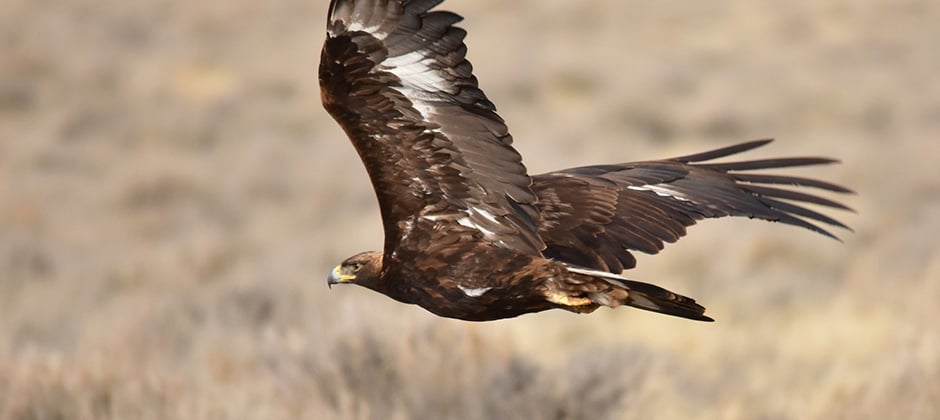Share this article
Golden eagles avoid humans, favor sagebrush
Researchers keen on mapping golden eagle habitat beyond just nesting preferences have taken a bird’s-eye view to the landscape the raptors use when not attending to eggs or chicks.
“We wanted to really know where are the places we go to prioritize conservation,” said TWS member Jason Tack, a wildlife biologist with the U.S. Fish and Wildlife Service and the lead author of a study published recently in Animal Conservation.
While much is known about the types of areas golden eagles (Aquila chrysaetos) choose for nesting, less is known about their summer foraging territory, and where they spend their time when they aren’t nesting or fledging chicks.
“A lot of times we take snapshots of these things and we fail to understand the dynamic nature of habitat use of species,” Tack said.
That is often harder to track since, outside nesting seasons, golden eagles aren’t anchored to a single spot on the landscape.
Tack and his co-authors wanted to improve their knowledge of the types of areas used by golden eagles. They applied occupancy models to survey data collected every year from 2006 to 2012 in the western United States during the late summer post-fledging period.
They found that the birds were largely transient, rarely returning to the same areas. They shy away from areas with high human development and also avoid drought-stricken areas and prefer intact sagebrush habitat, Tack said, including places like the Wyoming Basin, eastern Montana and the Snake River plain in Idaho.
“They pretty consistently use that geography,” Tack said.
He believes that this type of research will help conservationists improve their focus on optimal locations important for golden eagle protection.
“It shows us where we can go to prioritize our investment,” he said. This could include mapping areas for measures like retrofitting power lines to stop potential electrocution, Tack said, or reducing lead ammunition that eagles can ingest when eating carcasses.
Since eagles are long-lived, he said, adult survival is key to maintaining the population.
“The crux for eagles is keeping them alive,” he said.
Header Image: Researchers say a better understanding of golden eagle distribution year-round can help inform conservation decisions. ©Tom Koerner/USFWS








